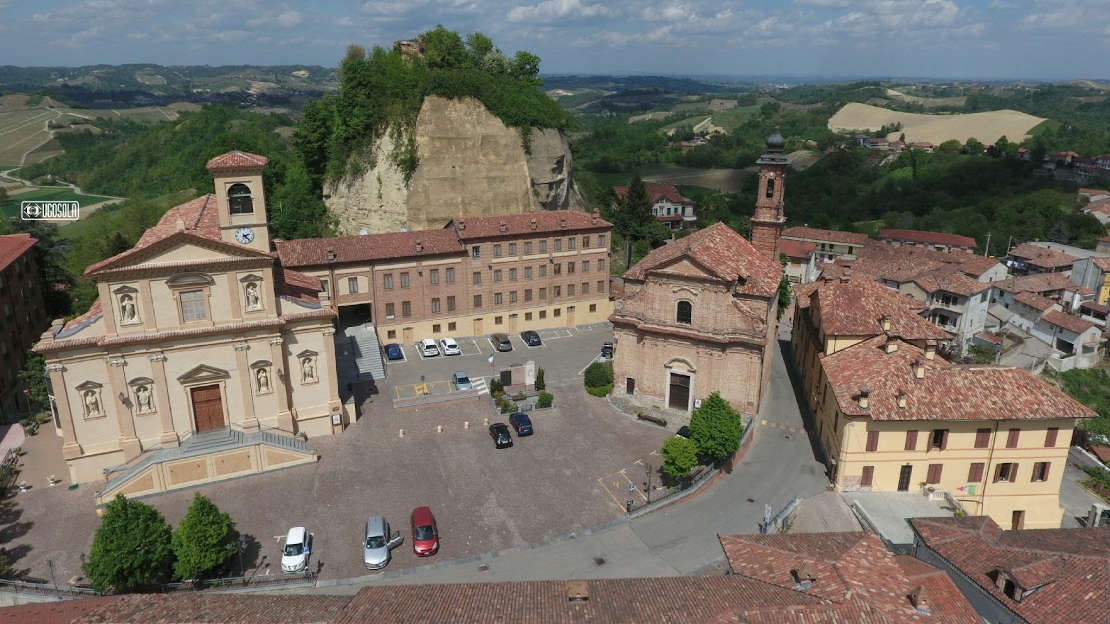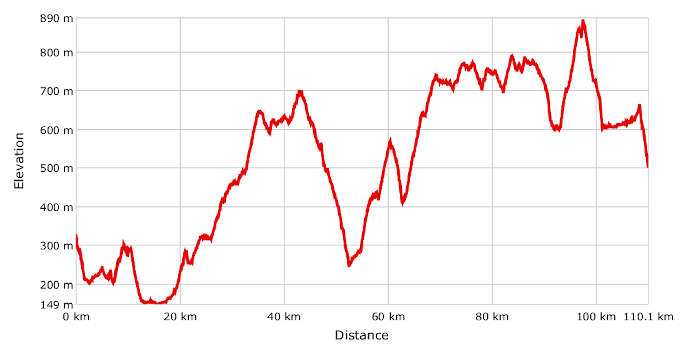
- Bike: strada/trekking
- Difficulty: ***
- Distance: 110 km
- Altitude difference: 741 m
- Total ascent: 2284 m
- Total descent: 2099 m

The Strada Romantica delle Langhe e del Roero association in Bossolasco, near Cuneo, has worked with GAL Langhe Roero Leader to create a route that takes riders on an easy-going, surprising discovery of this area, comprising the 'Vineyard Landscape of Piedmont: Langhe-Roero and Monferrato', which has been on the list of UNESCO World Heritage Sites since 22 June 2014.
The 110 km route can be downloaded with GPX. It winds its way along roads with relatively little traffic and is split into 11 legs. Each leg has a panoramic view point and a theme tied to the local area. As the name of the route suggests, it is best done in a romantic couple.
Leg one: Vezza d’Alba.
Theme: the Roero Truffle.
Hilltops, deep gorges and plummeting rock faces: these are the famous Rocche rocks. They make up the Roero landscape on the left side of the river Tanaro. The area is home to Vezza d’Alba, a thousand-year old hamlet that held its ground throughout the feudal era, as evidenced by the remains of the castle where the Roero family lived until the end of the 17th century.
The theme of this leg is the Roero truffle and the area used by people to learn about truffles.
Leg two: Magliano Alfieri.
Theme: the Castles of Langa and Roero.
The history of Roero is encapsulated in Magliano Alfieri, from ancient Rome to the feudal era, when large families divided the lands between them. This was the reign of the Alfieri family. Between 1660 and 1680 they built the imposing castle that dominates the area and was home to young Vittorio, destined to become one of Italy's greatest tragic poets.
Leg three: Neive.
Theme: an abundance of wine and vineyards.
The town of Neive has been named “ one of Italy's most beautiful villages. The historic centre of the village has a medieval plan and is set on a hill on whose slopes vines bask in the heat of the sun. Growing grapes is a tradition that calls for hard work and passion, traits that have made the Langhe, Roero and Monferrato a veritable paradise for wine-making.
Leg four: Treiso.
Theme: the Phoenician fortresses of the Resistance
Most likely, Treiso was the site of the third milestone on the Roman road Magistra Langarum, leading from Alba Pompeia to Provence in France.
Treiso was described in prose by Beppe Fenoglio thus: 'This world is made to live in peace with us.'
There are many country chapels and memorials on this route, such as the pillar dedicated to the fallen partisan soldiers, a tribute to the heroes of the Resistance.
Leg five: Trezzo Tinella.
Theme: crossing the hills and the Alps.
On the border separating Langhe from Monferrato is Trezzo Tinella, a tiny village nestled in the woods that boasts one of the most spectacular views in the area. At Boscasso, you feel like you are on top of the world as you enjoy the view of mountains that seem to be chasing each other between the Aosta Valley and Liguria.
Leg six: Benevello.
Theme: the Langa Wood.
Enter Alta Langa at Benevello, a natural view point over the surrounding area. Your gaze sweeps over the Alba plain and the rolling hills of Bassa Langa until it gets lost in the looming Maritime Alps. As you go up towards the taller hills of Alta Langa, the view is covered by lush woods.
Leg seven: Sinio.
Theme: the Langa hilltop theatre.
In the land of Dolcetto and Barolo, the village of Sinio rises up among the hills and vineyards that lend such harmony and serenity to the area. The ancient medieval village has a concentric plan in the form of a heraldic shield, which is not common in the Langhe. The theatre company Nostro Teatro di Sinio retells ancient stories and on 14 August every year, the Storie di Masche plays are performed.
Leg eight: Cissone.
Theme: humankind and the land of Langa.
The village of Cissone holds a central position in this sprawling valley, covered in woods severed by the river Riavolo. Many paths pass through these woods, welcoming people who want to enjoy a relaxing stroll. The land is difficult to work in the Langhe and Roero; it is thanks to the sweat of the locals' ancestors and their farming expertise, so closely linked to the seasons, that the land bears fruit today.
Leg nine: Murazzano.
Theme: Langa traditions.
Houses with courtyards and sophisticated, elegant buildings are the bricks and mortar of Murazzano. The town is called the 'shield and key of Piedmont' thanks to its strategic position. Its perfectly square tower is 33 m tall and the best preserved of all the towers in Alta Langa.
As in days long gone when the people played cards in the taverns and balon ('big ball') in the square, sport is still an important element of the Langhe, Roero and Monferrato culture.
Leg ten: Mombarcaro.
Theme: the Sea.
The word Mombarcaro derives from the Latin mons (mountain) and barcari (of boats), which is an appropriate name for this, the 'summit of the Langhe'. From here you can see from the peaks of the Maritime Alps all the way to the perennial snow atop Monte Rosa. It is hard to imagine the sea from here, but from the top of some of the hills on a clear day, it is possible to get a glimpse of the shimmering water.
Leg eleven: Camerana.
Theme: endless orchids.
On the edge of the upper Belbo valley sits Camerana, a group of hamlets resting in a vast basin at the bottom of the Bormida valley.
In the Sorgenti del Belbo nature reserve there are 43 species of orchids; the varieties that grow here represent nearly half of all the orchids in Italy.
